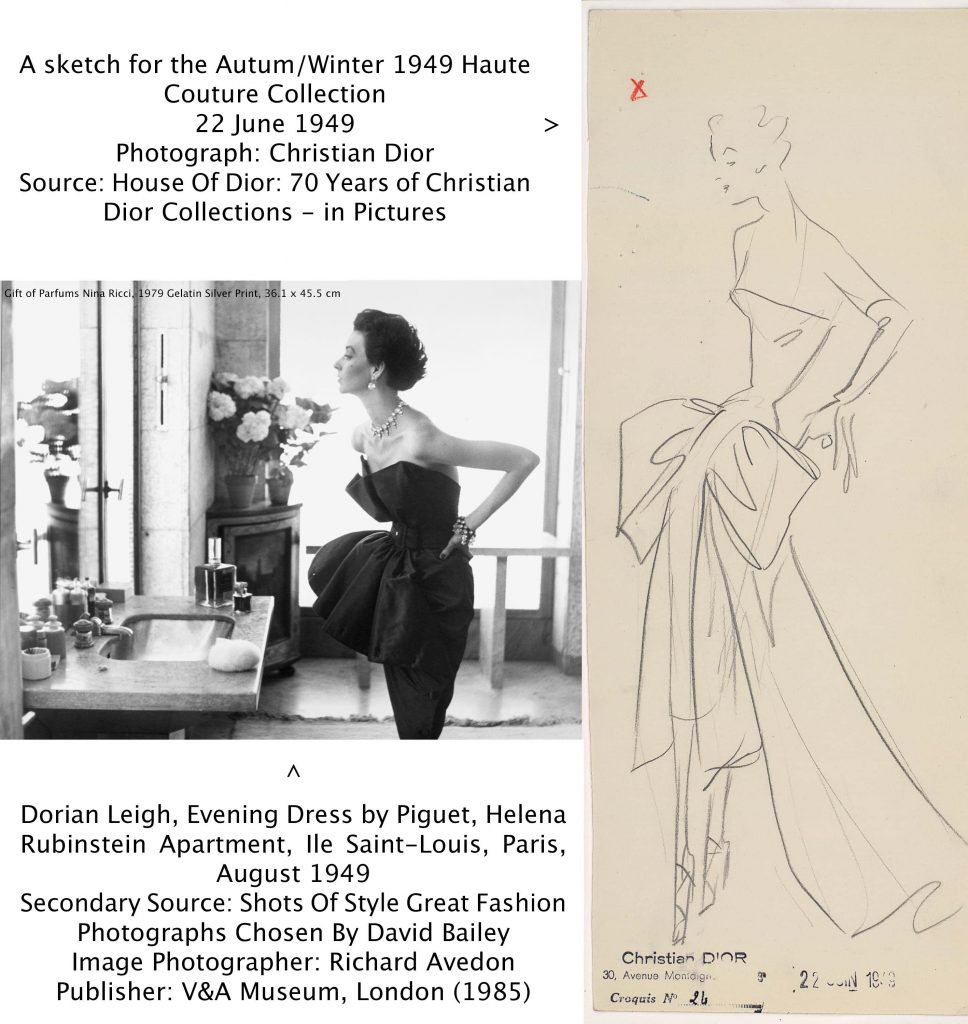I began this Module with a photograph from the book ‘Shots of Style Great Fashion Photographs Chosen By David Bailey’ as I am interested by black and white fashion photography due to its timeless and often dramatic imagery and feel they are equally pieces of art, through a camera lens rather than a brush stroke.
The image chosen for analysis is Richard Avedon’s sophisticated and dreamy 1949 photograph of model Dorian Leigh, wearing a Piguet evening dress taken in a luxurious bathroom in a Paris apartment. The style of this image is typical of Richard Avedon’s iconic photographs – minimalist, subtly crafted and usually illuminated in front of a plain backdrop. In this 1949 image, the full mirror and the background window throws light on the subject and adds to the overall luminosity of the portrait, especially highlighting the outline of Dorian and the detail on her voluminous dress. The perfume bottles in the portrait are large and chunky, adding to the luxury and excessiveness of the image.
Avedon has carefully crafted the objects in the portrait and in particular the model’s stance. The portrait is linear and precisely composed. For example, there is a sense of symmetry between the model’s 90 degree angular pose of her arm and the horizontal table surface, which runs parallel to her forearm. The pose of the model’s arm and the table top form a ‘Z’ shape, which again draws the eye towards the subject. This accentuates the model’s frame and also draws the background objects into the overall mood and imagery of the photo.
Piguet’s evening dress is similar to that of Christian Dior’s ‘New Look’, both timeless and sophisticated garments. There is a sketch from Dior’s A/W 1949 collection which features a similar silhouette of a model wearing a garment with a cinched waist, large bow and swathes of fabric to create full length, expensive skirts. In both portraits the excessive volume of fabric contrasts and frames the slim and delicate frame of the model, highlighting the femininity of the model and underscoring the exclusivity of the dress (and its expense).
I researched the Victoria & Albert Museum’s archive, a reputable and vast source of material, to deepen my understanding of the impact of Dior’s 1950s fashion which after years of austerity during World War II brought new hope and a sense of fun and frivolity (couture party dresses) after the bleak war years. This fashion era was labelled by Dior as the ‘Golden Age’, where women’s fashion began to change from practical, wartime masculine-style clothes to an hourglass, structured silhouette that emphasised and celebrated the female form as they began to ‘dress for their spouse’. This look was then described by American Harper’s Bazaar’s editor, Carmel Snow as ‘a total glorification of the female form’. However, as rationing was still in force after the war, and until 1954, many didn’t agree with the huge swathes of fabric being used to create these feminine, exaggerated garments.
References:
https://www.metmuseum.org/art/collection/search/262494
https://vintagefashionguild.org/fashion-timeline/1950-to-1960/
https://www.vam.ac.uk/articles/the-golden-age-of-couture

